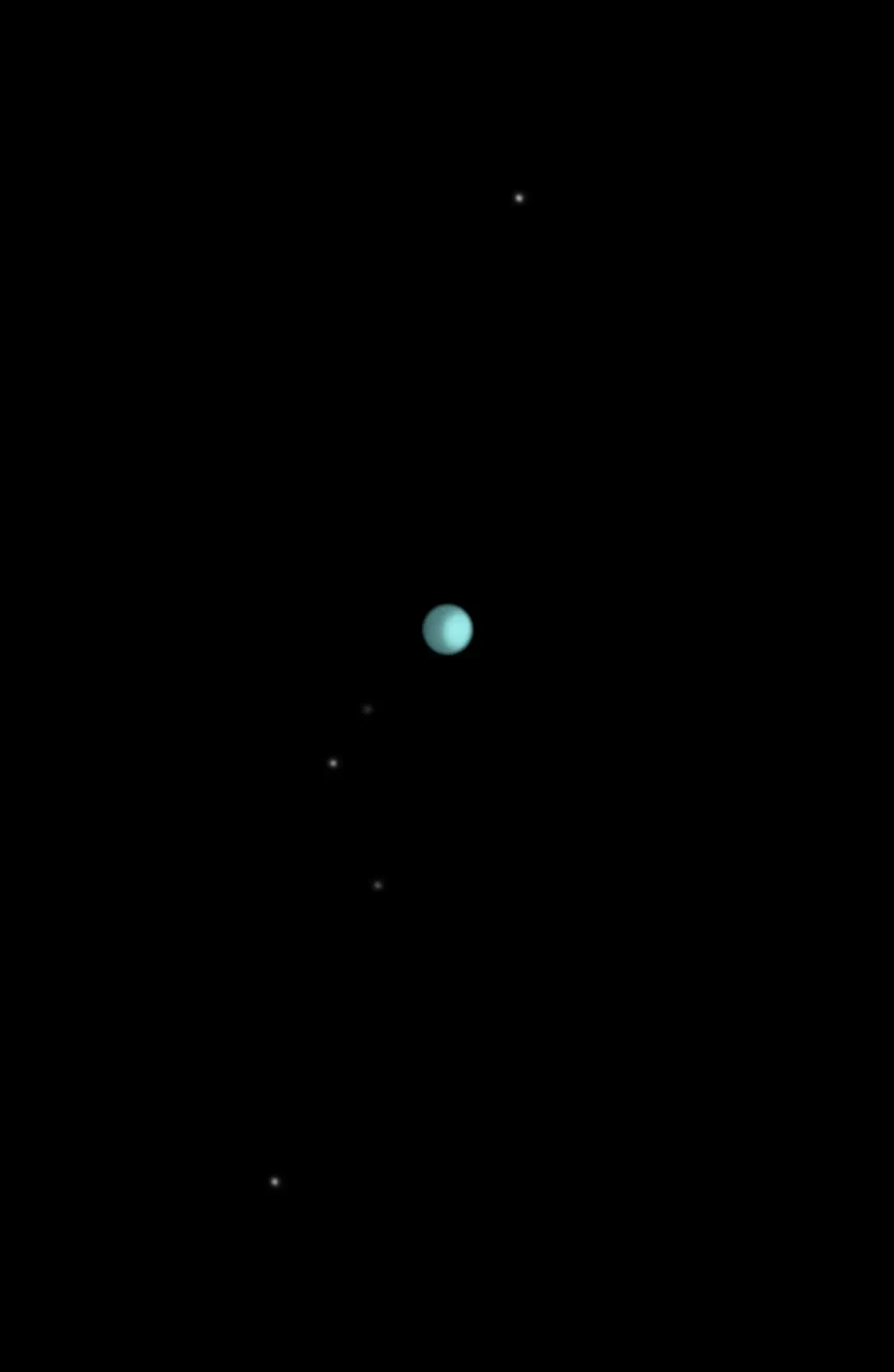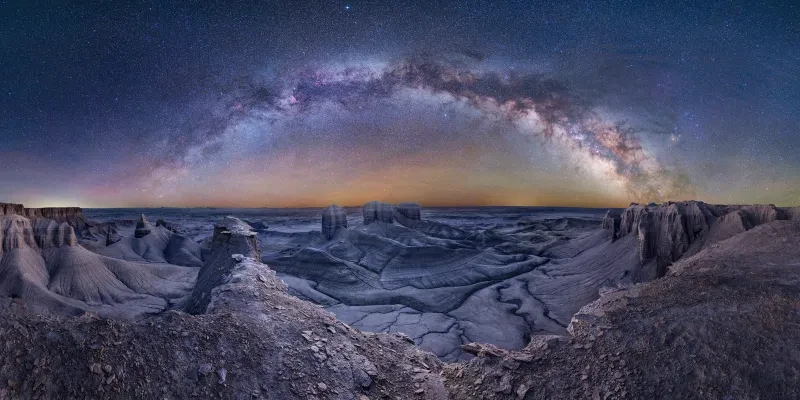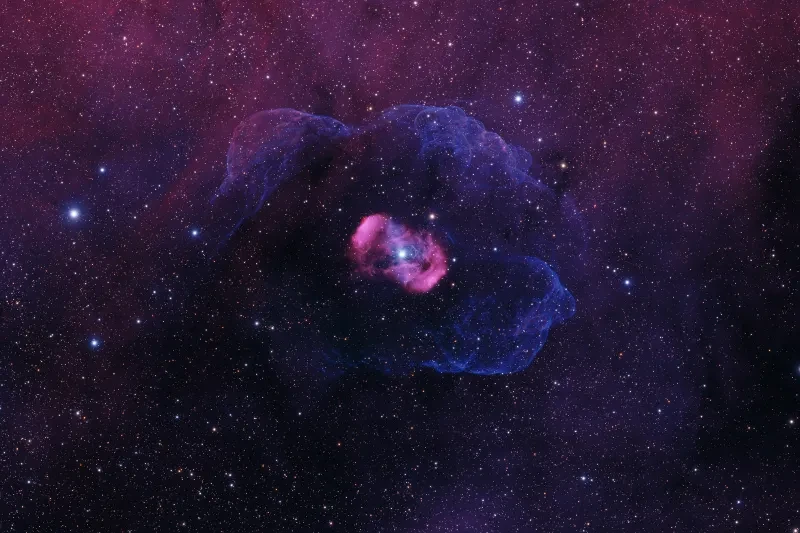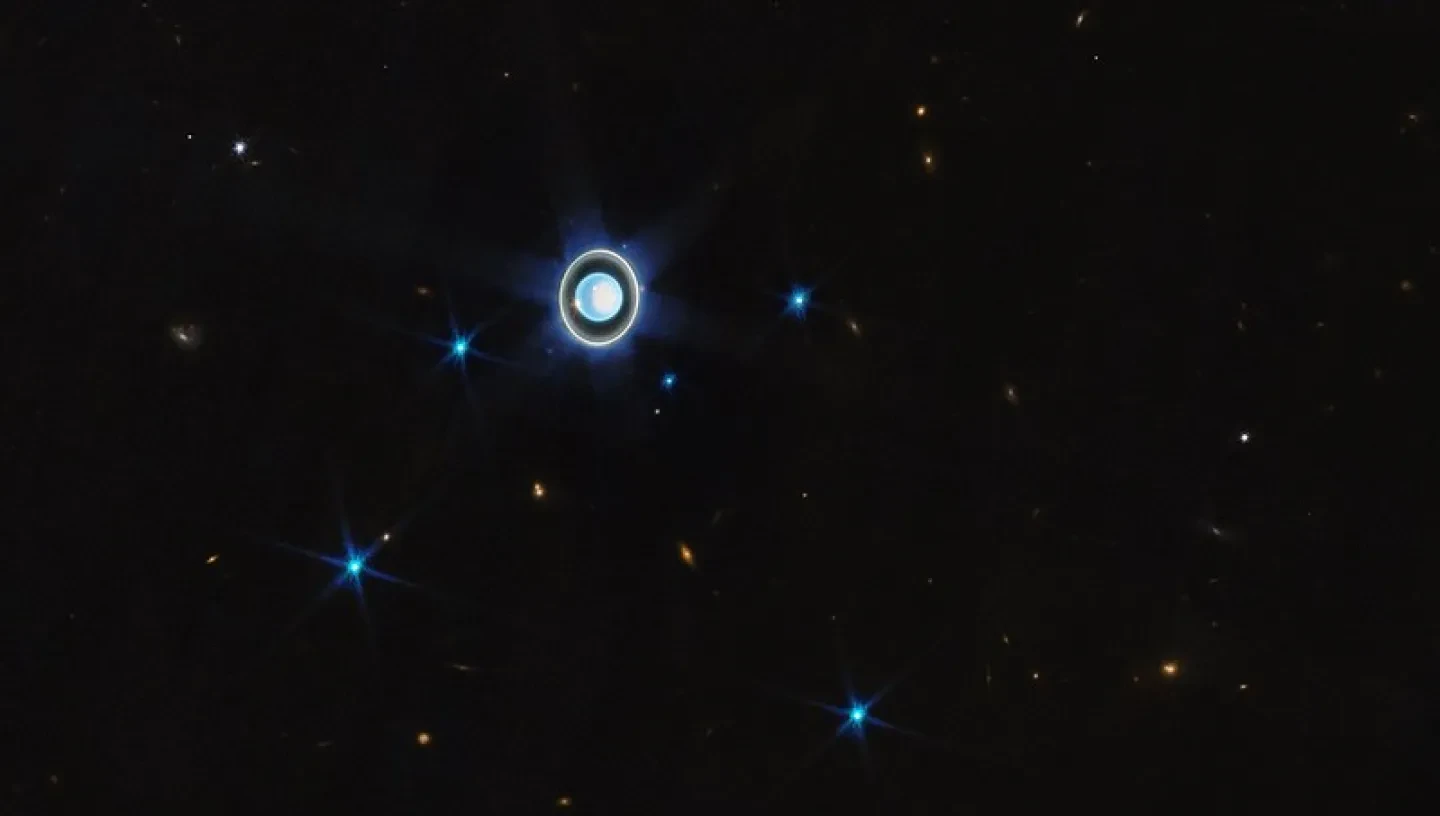
Planet Uranus
The planet Uranus: first of the planets to be found in the modern era and dressed in rings. It orbits the Sun on its side and the wrong way round!
The planet Uranus is the seventh planet of the Solar System. It has a diameter of about 52,400 km; a mass nearly fifteen times that of the Earth and orbits the Sun every 84 years.
From the Earth, Uranus can be seen with a small telescope and is just visible to the naked eye. However, even with large telescopes it can only be seen as a small greenish disk with no surface details visible.
The discovery of the planet Uranus
Uranus was the first planet to be discovered that was not already known to the ancients. William Herschel announced its discovery in 1781 although initially he thought that it was a comet.
Herschel was not the first astronomer to record Uranus but he was the first to recognise that it was not a star. The earliest records of Uranus are by Flamsteed in 1690 (he called it a star, 34 Tauri).
More about the discovery of Uranus
Results from Voyager 2
Our knowledge of Uranus has been revolutionised by the amazing results from the close fly-bys of each by Voyager 2 in January 1986.
The most striking observation was that the planet Uranus showed almost no features. It appears as a large green-blue ball in pictures from both Earth and Voyager.
The Voyager data suggests a planet with a fairly small, rocky core surrounded by a deep, super dense atmosphere of gases and ices of water, ammonia and methane. Above this there is an atmosphere of hydrogen and helium with clouds of methane, ammonia and water-ice. The temperature at the top of the clouds is -214°C.
A peculiar way of going about things
Astronomers already knew that Uranus rotated about an axis that is tilted at 98° to the pole of its orbital plane. This means that the planet Uranus is ‘lying on its side' and rotating in the opposite sense to that of the other planets.
The effect on the surface is that the seasons on Uranus are linked to its orbital period about the Sun, so near the poles winter will last 42 Earth years.
Satellites
Before the Voyager 2 fly-by, 5 satellites were known. Two, Titania and Oberon, were found by Herschel in 1787. Ariel and Umbriel were discovered in 1851 and Miranda in 1948. Voyager added another 10 objects of which two are ‘shepherds' in the rings.
As of February 2024, Uranus has 28 known moons.
Uranus' rings
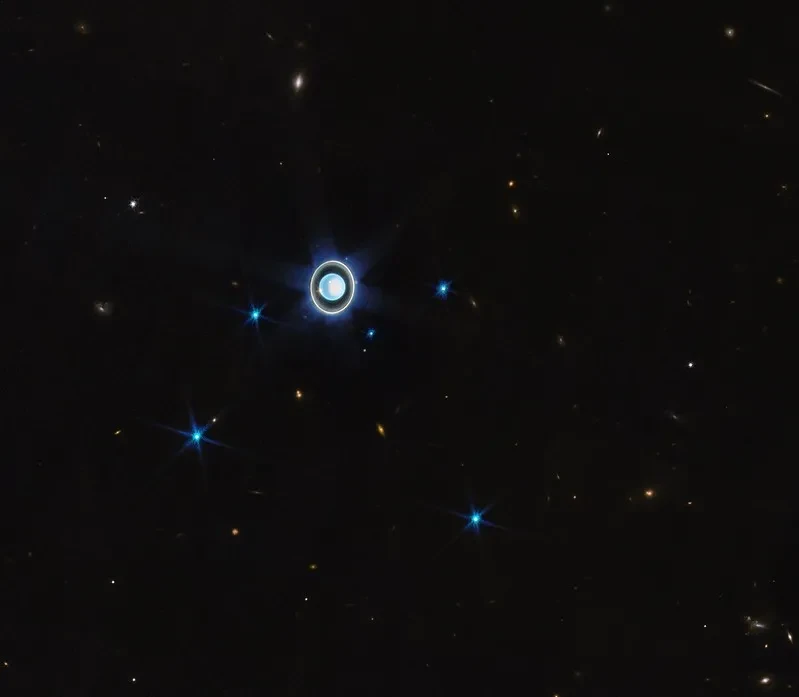
The ring system around the planet Uranus was discovered, almost by accident, when the eclipse of a bright star by Uranus was being studied. Small dips in the brightness of the star were seen while the star was some distance away from the disc of the planet and it was deduced that this was due to material in a ring about Uranus obscuring the starlight. The presence of the rings was confirmed by the Voyager spacecraft, which added a tenth ring to the nine discovered from the Earth.
The rings are grey and reflect light poorly and are probably made of dust. They must be younger than 100 million years old and are likely to have been formed from the break-up of a small moon due to collision with a meteoroid or comet.
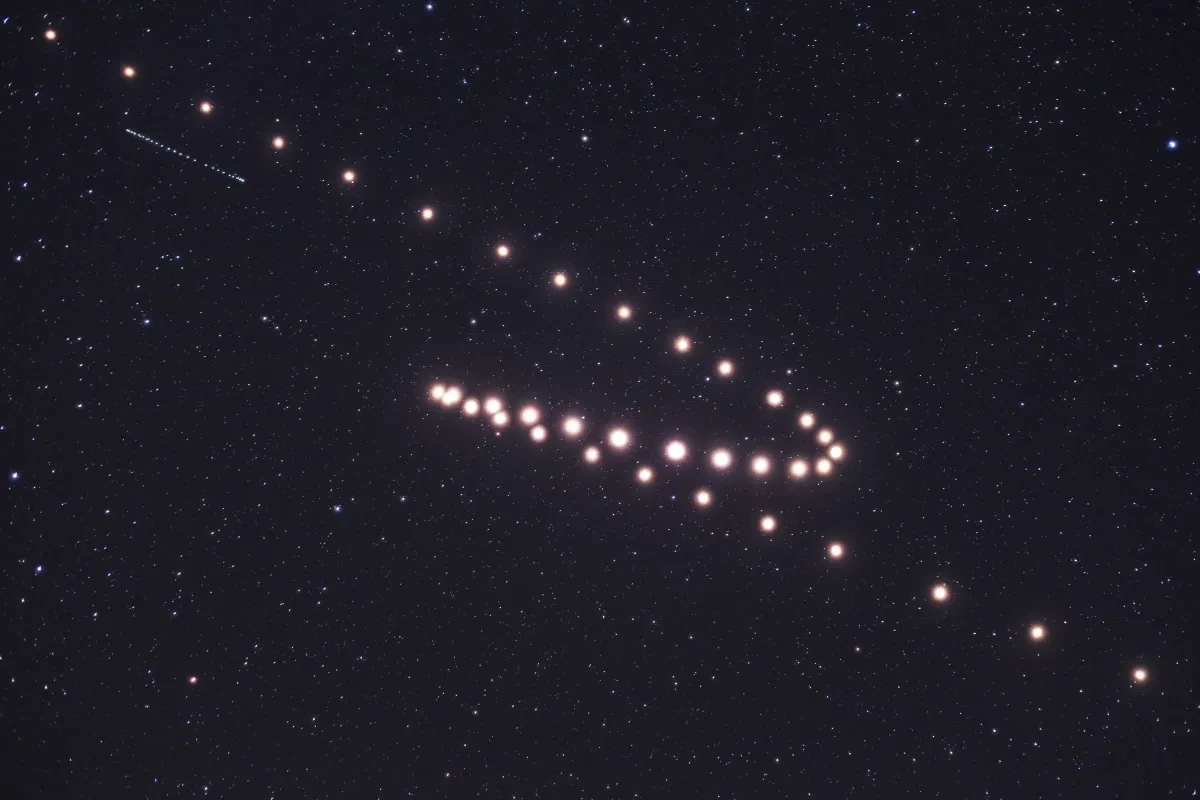
In this photo, you can see Mars putting on a show in the constellation of Pisces, while Uranus is also visible in the constellation of Aries performing a much slower retrograde motion of its own.
Retrograde Mars And Uranus by Tunç Tezel
Astronomy Photographer of the Year 2021
Header image: Uranus photographed by JWST, with rings visible - credits NASA
